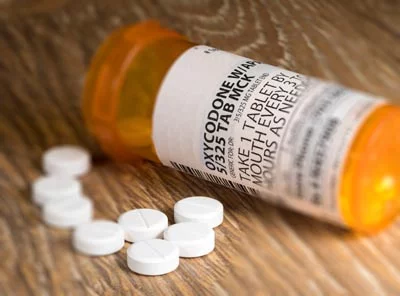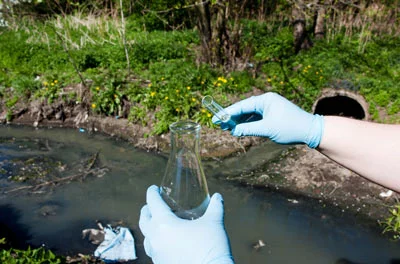The Truth About Drug Abuse In White Collar Professions

When thinking of a drug addict, most people picture someone lowly educated and living off crime. However, in Australia, the profile of a drug abuser challenges these stereotypes.
In our country, drug abuse is a problem not exclusive to unemployed or low skilled workers. In fact, there is one sector that is contributing to Australia’s steadily growing drug problem — the white collar professionals. The typical drug user in Australia is a professional with tertiary education.
A report by the National Drug Strategy Household Survey confirms this: a majority of cocaine users are between the ages of 20-39, educated, employed, and living in major cities. In addition, they also belong to the highest socioeconomic status. As Will Tregoning — founder of a non-profit organisation committed to challenging current drug policies — once said: “A lot of wealthy people take drugs.”
Read on to find out the incredible truth about drug abuse in white-collar professions in Australia.
A high stakes job puts the pressure on professionals. Long working hours, an intense social scene, plus a large disposable income create the perfect context for drug abuse.

Most Affluent Suburbs Are The Biggest Consumers of Cocaine
Drug abuse is interwoven into the corporate culture of Sydney. And one drug — cocaine — is proving to be the substance of choice of Australia’s wealthiest and most influential in the country. The number of cocaine users continues to grow among C-level professionals who work in the banking, legal, and finance industry. Many state that obtaining the drug is very easy.
In 2016, the Daily Telegraph accessed court documents detailing the operations of a drug syndicate in Sydney. Shockingly, a 64-year-old suburban grandmother headed the family-run drug syndicate. They admitted to peddling 30 bags of cocaine a night. Distributing the lot to their high-flying clients in Sydney’s northern and eastern suburbs. Furthermore, Sydney police also note a steady increase in drug-related incidents in Sydney’s wealthiest suburbs around the same time.
The Oceania market for drugs is extremely lucrative according to the 2014 United Nations World Drug Report. In fact, the most powerful drug trafficker in the world, Sinaloa Cartel kingpin “El Chapo” established a cocaine importation business on the eastern part of Australia. In 2015 Police intercepted a shipment by the cartel of 240kg of cocaine, worth about $83 million in Sydney. The monthly consumption of cocaine across the Australian east coast is about 500 kilograms a month.
The Easy Slide into Cocaine Abuse
Dr. Christian Rowan, Addiction Specialist at The Banyans Health and Wellness Residence says cocaine use is popular due to its stimulating effects. On it, the user is wide awake and buzzed on energy. Two major reasons for using it are to stay awake and alert for work and to unwind and relax for socialising.
Cocaine users also prefer the drug because of its very few physical symptoms. With less obvious symptoms, social users can shrug it off as a harmless habit. Being high on cocaine may not as obvious as being high on marijuana, but that’s what makes the drug so insidious. Because the negative effects of cocaine develop gradually and are not immediately noticeable, it is particularly dangerous.
Because of its high cost and the class of people who use it, cocaine has also become a status symbol. There is a sense of glamour to using cocaine and being one with the elite. What’s interesting is how cocaine users do not consider themselves addicts, referring to themselves as “recreational” users.
Misconceptions About Cocaine
Another factor that adds to the growing number of cocaine users is the misconception that cocaine is not as dangerous as other drugs. Since early users of cocaine are introduced to it socially, it makes the drug seem harmless. Furthermore, the social context makes them unaware of their developing drug dependency. However, socially driven cocaine use is highly dangerous.
The findings, published in the medical journal PLOS ONE show that cocaine users have increased aortic stiffness, greater left ventricular mass, and higher systolic blood pressure. According to Professor Gemma Figtree of Sydney Medical School, there are acute side effects of cocaine use. Some of which include myocardial infarction or heart attack. Cocaine users often use it in conjunction with alcohol, which is harmful to their health.
Cardiovascular disease is the leading cause of death in Australia. And men who suffer from heart disease are getting younger and younger. Could growing cocaine use in the country have something to do with it?

A Quarter of Ice Addicts in Australia Are White Collar Workers
In an article in the Dailymail, rehabilitation company, “The Cabin Addiction Services Group” says an overwhelming number of ice users in rehabilitation belong to the corporate world. Even more shocking is their statement that many of the ice addicts even belong to the health and medical sectors. Ice is an expensive habit to keep, and its users spend at least $500 a day to sustain the habit. Addiction specialists all over Australia confirm the high number of drug abuse problems in white collars, based on the admissions in their rehabilitation centres.
Functional users of ice use it to be more alert, more confident, increase their energy and stamina. Ice, traditionally used by the blue collar workers are now common in finance, management, and IT. And according to the group, ice addicts are able to hide it from their friends, family, and co-workers.
The largest ever seizure of ice was in eastern Melbourne — police found $900 worth of ice, equivalent to 9 million hits.
Straight From the Mouth of a White Collar Heroin User
In 2015 a business analyst from one of the leading trading companies in Australia detailed his 20-year heroin addiction. At the time of writing, he was expecting a large Christmas bonus. That’s on top of earning $100,000 a year. The man admitted to injecting himself with heroin at least once a day and had been an addict since the age of 19. He was still spending his days analysing numbers and advising senior management on business strategies.
In his own words, he was very lucky to have been able to keep his heroin addiction hidden for so long. “I am just a normal person, who happens to have a massive weakness for heroin,” he added.
The director of psychiatry at Royal Brisbane Hospital was astounded to have met such a high-functioning drug abuser, much less a heroin addict. This is clearly not typical, but it highlights how good drug users are at covering up their addiction.

Prescription Drugs – Opioid Misuse on a Steady Rise In Australia
Compared to heroin, prescription pharmaceutical opioids result in more hospitalisations and deaths in Australia. A report by the Australian Institute of Health and Welfare (AIHW) paints a picture of a budding opioid crisis in the country. The number of hospitalisation cases due to the misuse of opioids or overdose rose by 25 percent in the last 10 years.
From 2016 to 2017, there were 5,112 emergency department visits and 9,636 hospital visits due to opioid poisoning alone. According to AIHW spokeswoman, every day there are 150 hospitalisations in Australia due to opioids. Every day in Australia, there are three deaths due to opioid misuse — and the most heavily affected group are Australians that fall between the ages of 35-44. The most common pharmaceutical opioids responsible for deaths were codeine, oxycodone, and morphine.
Monash University student Samantha Lalic analysed the dispensation of opioids under the Pharmaceutical Benefits Scheme (PBS) from 2013 to 2017. She found that 1.9 million Australians begin taking prescribed pharmaceutical opioids every year. Out of the 1.9 million new users, about 50,000 of them end up using pharmaceutical opioids in the long-term, beyond what their doctors prescribe.
Doctors are eager to prescribe pharmaceutical painkillers and their powerfully addictive nature makes patients want to continue taking them long after the need for pain killers has passed. AIHW research data in 2016 shows that 11 percent of Australians admitted to using opioids for non-medical purposes.

White Collar Professionals Reporting To Work Drunk on Alcohol
Out of all the drugs, alcohol is the most accessible. After all, it is perfectly legal. For example, this article highlights the growing number of high functioning alcoholics in Australia. These are well-educated, sophisticated and gainfully employed citizens.
Wastewater Testing Results Highlight The Extent of Drug Use In Australia
Between June and August of last year, researchers from the National Wastewater Drug Monitoring program quietly collected wastewater samples from 58 wastewater stations in the country. The results of the latest wastewater testing were published in February of this year. The sixth annual testing exposes not just the drug habits of Australians according to locality, but also how much Australian’s spend on illegal drugs last year– which is a whopping $9.3 billion.

The drugs detected by the wastewater study include alcohol, ice, amphetamine, MDMA, cannabis, cocaine, oxycodone, and fentanyl. Last year, Australia consumed:
- 9.6 tonnes of ice
- 4 tonnes of cocaine
- 1.1 tonnes of MDMA
- 700 kilograms of heroin
Test results show oxycodone and fentanyl consumption is on a steady rise in the Australian Capital Territory. However, Tasmanians still remain the highest consumer of prescription drugs. Sydney is still cocaine capital with the highest consumption rate of the drug. Ice use in regional Australia grew consistently, with Canberra taking the top spot for residents taking more doses of the drug in a single day. Particularly concerning about this is that ice use is on the rise among young Canberrans.
Furthermore, Victoria takes the place for a state with the highest rates of heroin use, while cannabis use in higher in the regional than metropolitan areas. With MDMA, there is a large variation in the recorded use of the drug. But research shows that it is mostly used for recreational purposes such as in music festivals, where an increase in overdoses cases sparked a national debate. Moreover, alcohol use remains consistent all throughout Australia. It remains one of the most consumed drugs in the country.
The wastewater test results show that there are drug users in every pocket of Australia, both in the regional and metropolitan areas.
Are Your Employees Abusing Drugs and Alcohol?
To sum it up, drug users in our country are intelligent, articulate, employed and have the drive to succeed. A majority are not even aware that they have an addiction, which makes it difficult to address drug abuse.
With the prevalence of drug abuse among white-collar professionals, are you sure that none of your employees are affected? People who work in high-stakes industries are under immense pressure to perform well. Consequently, they may turn to drugs and alcohol to keep their heads above water.
The only way to help a drug-addicted employee and avoid potential disaster is through a drug and alcohol testing program.
The first step is to introduce an enforceable drug testing policy for your company. You are then able to perform mandatory workplace drug testing and address drug use, hopefully in its early stages.
Safework Health can help you secure and safeguard your company and workforce from drug and alcohol abuse through our comprehensive drug testing services.
If you want to know your options, give us a call today.
